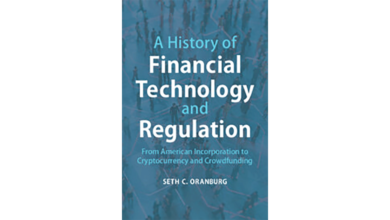Bengaluru start-up has its eyes set on democratising cell therapy for incurable diseases

A few years back, in a casual conversation with Dr. Jogin Desai, Dr. Rajani Battu, a retina surgeon and senior consultant at Aster CMI hospital, brought up cell and gene therapies. The conversation revolved around how the therapies would change the medical landscape but may not be very relevant to India due to the prohibitive costs that could be as high as a few crores for a single injection.
In December 2017, the US Food and Drug Administration approved Luxturna, the first gene therapy for patients with hereditary retinal dystrophy that leads to vision loss and, in some cases, complete blindness. The cost of it was a whopping $4,95,000 (₹4.12 crore) per injection.
For Dr. Desai, who was earlier the executive director at Quintiles ECG Services, this made no sense. He felt the high costs made it unscalable.
Thus, along with Dr. Battu and Dr. Rajarshi Pal, in 2017, he set about creating Eyestem Research, a platform that could democratise access to cell therapy for, whom Dr. Desai refers to as, the bottom 99.99 per cent of the population.
Curing the incurable
Dry Age-related Macular Degeneration (AMD) is a common eye disorder among people above 50 years. Affecting the macula, which is the centre of the retina, it is the leading cause of incurable blindness for people above 50 across the world. As per studies, more than 170 million people suffer from it, around 50 million of them in India.
Eyestem Research’s first product aims to cure dry AMD at relatively affordable prices. “In dry AMD, a layer of retina known as the retinal pigment epithelium goes away. We created that layer in the lab,” says Dr. Desai.
“Then we inserted that layer into gene-edited rats that lack that layer. We have proven that those rats could see later,” he adds. The animal studies were carried out at the Oregon Health and Science University in Portland, which is a centre for macular degeneration research.
Currently awaiting Drugs Controller General of India (DCGI) approvals for in-human trials, the price target of the product is $10,000 or ₹8 lakhs per injection, which is a significant reduction from the current norm of half a million dollars.
The Eyestem Research team
The frugal innovators
So, how did Eyestem Research, for its product, achieve a price point that’s almost 1/50th of the existing market prices?
“From day 1, we instituted purpose into the company. We made sure that every single decision was made with a frugal innovation mentality,” says Dr. Desai who confesses to be a big admirer of Aravind Eye Hospital in Tamil Nadu which was a pioneer in making eye care affordable for a large population.
“At Aravind, they completely thought the process around. We also created self-imposed constraints on ourselves.”
The team set a target that from the time of incorporation to the first in-human application, the total spend should not exceed $4 million. Dr. Desai points out that it is 1/10th of the amount usually spent.
“To create cells, we have created a protocol where from one source material of one million cells, you can create 100 million cells. That is a 1:100 ratio. If you can create 100 from 1, you can automatically cut the costs drastically right away. Those are the kinds of innovations that are very helpful in decreasing the overall cost,” Dr. Desai explains, noting that the process of the company is patented in India and the US.
Having achieved a cost of $3,000 per dose in the lab, he is confident that the targeted market price of $10,000 can be achieved. The team, however, wants to ensure that the product doesn’t come across as cheap just because they are offering the therapy at a lower cost, he says.
“We have to make sure that the quality we maintain is not just on par with the others, but better. For the animal studies, for example, we collaborated with OHSU in Portland. Our Good Lab Practices (GLP) toxicology studies are done at Dabur Research in Delhi. Our primate studies are done in Singapore. Three independent labs have confirmed that our product is effective as well as safe,” Dr. Desai says.
“For India and the other emerging markets, which are now called the Global South, we would love to be the therapy of choice offering unique price point and top quality. That’s the vision.”
Approvals and challenges
As the company awaits approval from the DCGI for in-human trials, it is also planning to file with the FDA and approach the Singapore Health Authorities in the coming days.
“We would really like the trial to be done in India. But we are also moving on all fronts so that wherever it moves faster we can take things forward there,” Dr. Desai notes.
In 2022, the company raised ₹51 crore in a series A round led by pharma majors Natco, Alkem and Biological E. Existing investors Kotak Investment Advisors and Endiya Partners also participated in the round.
However, raising money as a deep tech company in biotech has not been easy for Eyestem. “Raising money in India for biotech has always been a problem. VCs are not interested,” he notes.
While he acknowledges the support and grants by BIRAC and C-CAMP, where the company is incubated, he also points out that there are limitations to government funding for start-ups.
“We are a resource-starved nation. So, we have to figure out how to create private markets in India for biotech. Otherwise, a lot of these innovations will end up going outside.” The absence of a tried and tested regulatory framework in India for such therapies has also been posing challenges for the company.
The COVID-19 pandemic also threw a curveball at the team’s plans in the form of supply chain challenges. “We could not get a lot of reagents at that time. Our manufacturing set up was ready, but the unavailability of reagents troubled us,” Dr. Desai recollects.
Future plans
While the first product of the company would be cell therapy for dry AMD, the team has more plans up its sleeves. “Our core competence is taking cell A into cell B. Essentially, you can create any cell of the body,” Dr. Desai explains.
“We created beautiful 3D lungs in the lab during COVID. We have also created neural cells for the brain. Once we get our flagship product out, we will start looking at the next-generation products and other indices.”
According to Dr. Desai, the team also has really good animal data on how to treat Parkinson’s and pulmonary fibrosis. The company plans to raise funds later to take these two assets forward and get the clinical trials started.
“We have to make sure the current one is sailing before starting another ship. We want to create that platform. And the premise is very simple. The indication has to be incurable, it has to allow us to scale, it has to allow us to create a cell therapy which is relatively affordable,” Dr. Desai says.
month
Please support quality journalism.
Please support quality journalism.





